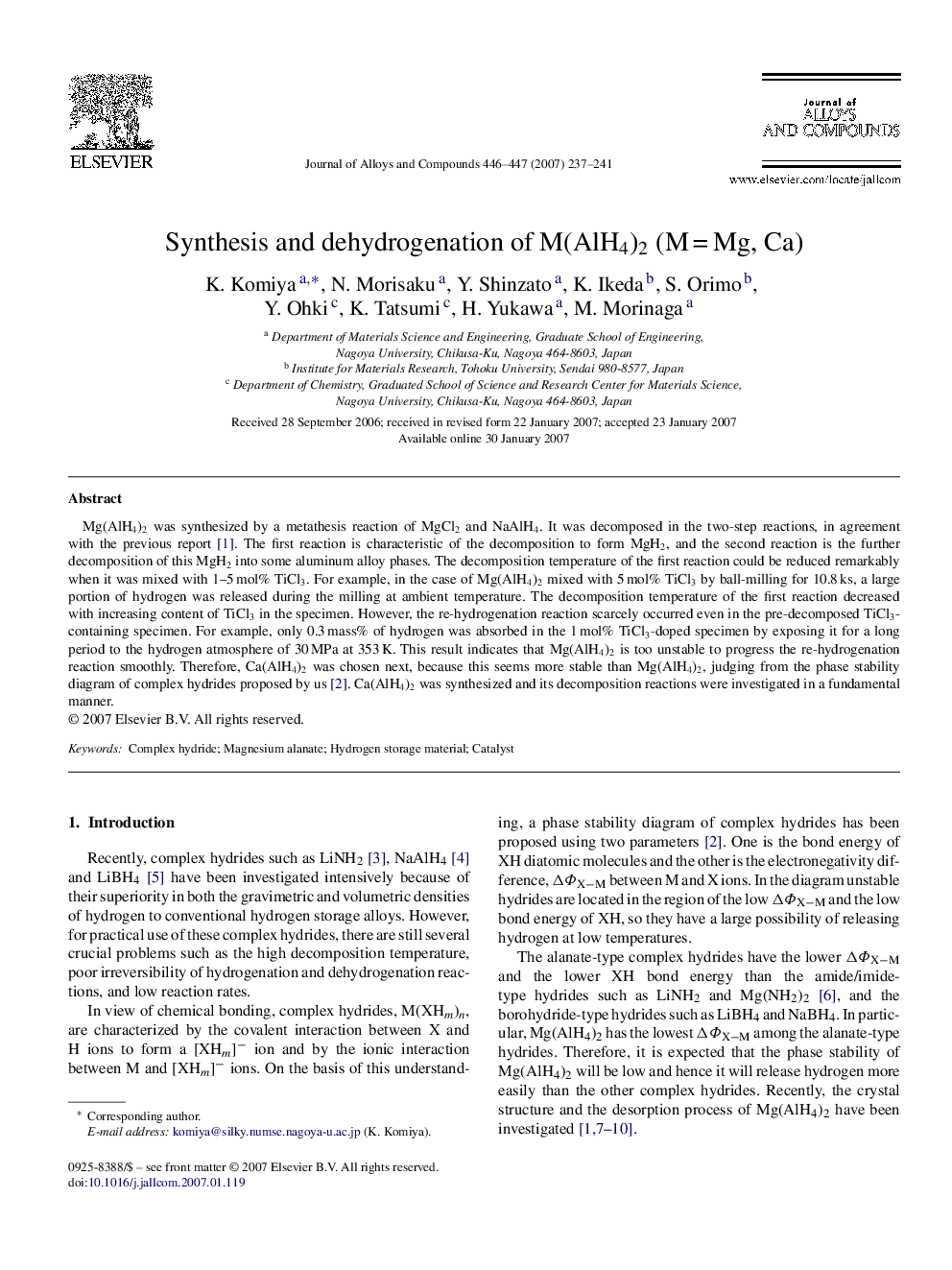| Article ID | Journal | Published Year | Pages | File Type |
|---|---|---|---|---|
| 1625938 | Journal of Alloys and Compounds | 2007 | 5 Pages |
Mg(AlH4)2 was synthesized by a metathesis reaction of MgCl2 and NaAlH4. It was decomposed in the two-step reactions, in agreement with the previous report [1]. The first reaction is characteristic of the decomposition to form MgH2, and the second reaction is the further decomposition of this MgH2 into some aluminum alloy phases. The decomposition temperature of the first reaction could be reduced remarkably when it was mixed with 1–5 mol% TiCl3. For example, in the case of Mg(AlH4)2 mixed with 5 mol% TiCl3 by ball-milling for 10.8 ks, a large portion of hydrogen was released during the milling at ambient temperature. The decomposition temperature of the first reaction decreased with increasing content of TiCl3 in the specimen. However, the re-hydrogenation reaction scarcely occurred even in the pre-decomposed TiCl3-containing specimen. For example, only 0.3 mass% of hydrogen was absorbed in the 1 mol% TiCl3-doped specimen by exposing it for a long period to the hydrogen atmosphere of 30 MPa at 353 K. This result indicates that Mg(AlH4)2 is too unstable to progress the re-hydrogenation reaction smoothly. Therefore, Ca(AlH4)2 was chosen next, because this seems more stable than Mg(AlH4)2, judging from the phase stability diagram of complex hydrides proposed by us [2]. Ca(AlH4)2 was synthesized and its decomposition reactions were investigated in a fundamental manner.
